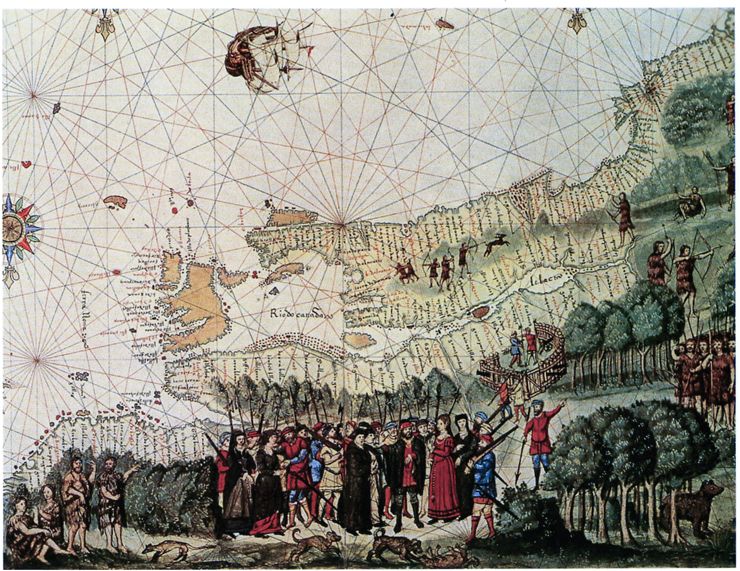Jacques Cartier Biography
16th century was a period of time when many European explorers set their sights on exploring vast new lands and continents that were discovered over entire world. The most accessible continent of North America received large amounts of attention in those early years of “Golden Age of Discovery”. One of the most famous and well-remembered French explorers from that time was Jacques Cartier (1491-1557) who made three journeys to the North America and claimed what is today known as Canada for France.
Jacques Cartier was born in 1491 in Saint-Malo, coastal city on the north west of Brittany, France. He spent first 30 years of his life as a respectable sailor, but his status rose greatly in 1520 when he married Mary Catherine des Granches who came from the rich and influential family. After Duchy of Brittany was formally united with the France in 1534, King Francis I ordered new wave of naval exploration of North American continent and search for “western passage” to the markets of India. With several journeys to Newfoundland in his belt, Cartier easily secured the position of the leader of expedition. He started his journey on May 10 1534, and after 3 weeks arrived to Newfoundland where he explored much of its coast as well as lands in Gulf of St. Lawrence (all those discovered lands were attributed to be in the Asia).
In his second journey that happened in between 1535 and 1536 Cartier explored much deeper into the Gulf of St. Lawrence, traveling ul the St. Lawrence river and discovering native Indian capitals of Stadacona and Hochelaga (today known as Montreal). It was there that rapids prevented his river journey to the west, and Cartier started returning home belonging that St. Lawrence River can indeed lead him to known Asian lands. During his return he and his 110 crew decided to remain in Canada for the winter, where they survived trough harsh weather and diseases. After his return home, Jacques Cartier was welcomed as a hero and was awarded with wealth and positions.
By late 1540, King Francis I wanted to establish permanent French settlement on the shore of Gulf of St. Lawrence and to find fabled riches in gold and diamonds that were often mentioned by native Indians. For that purpose King designated Jean-François de La Rocque de Roberval as a leader of this expedition and Jacques Cartier as his chief navigator, but problems with gathering supplies enabled Cartier to sail to the Canda much earlier than Robeval. This earlier launch enabled Cartier to establish first permanent French settlement in Canda, and start seeking gold and precious materials. After a year he saw the increase in hostilities with the natives and decided to go back to the France with ships full of newfound gold. During his return he encountered Robeval who ordered him to return with him to Canada, but Cartier disobeyed him and continued toward France. Sadly, upon his return he discovered that all gold and gems he collected was indeed only a quartz crystals and iron pyrites. It is worth noting that Robevaldid not manage to form permanent settlement in Canada, which was achieved 60 years later when Samuel Champlain founded Port Royal in Nova Scotia.
Jacques Cartier lived the rest of his life in his birthplace of Saint-Malo where he worked as ainterpreter in Portuguese. He died on September 1, 1557.
| Name | Jacques Cartier |
| Born | December 31, 1491 |
| Place of Birth | St. Malo, Brittany |
| Died | September 1, 1557 |
| Place of Death | St. Malo, France |
| Category (Occupation/Profession) | French navigator and explorer |
| Nationality | French |
| Known For | First European to travel inland in North America. Claimed Canada for France |
| Famous Expedition(s) | Voyages to Newfoundland and Brazil |
| Spouse(s) | Mary Catherine des Granches |
| Ships | Grande Hermine, Petite Hermine, Émérillon, Georges, Saint-Brieux |
| Monuments | Place Jacques-Cartier, Jacques-Cartier River, Jacques-Cartier Bridge, Jacques-Cartier State Park |




